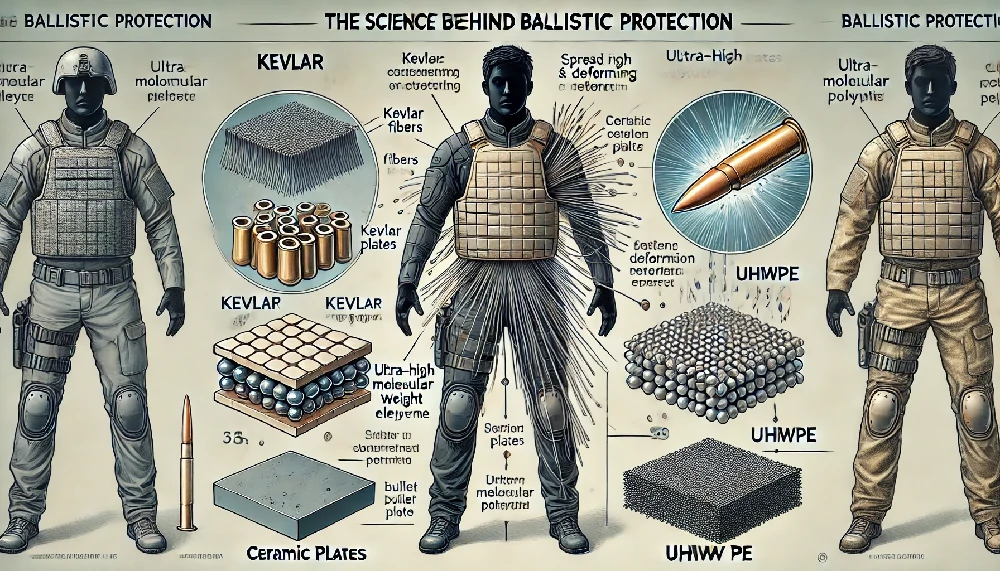Introduction
Ballistic protection technology has evolved significantly over the years, providing safety and security for military personnel, law enforcement, and civilians. Bulletproof materials such as Kevlar, ceramic plates, and polyethylene have revolutionized personal protective equipment. This article delves into how these materials work to stop bullets and prevent injury.
1.The Basics of Ballistic Protection
Ballistic protection is based on the principle of energy absorption. When a bullet strikes protective gear, the material’s job is to absorb and distribute the energy of the impact, preventing penetration. The effectiveness of this protection depends on several factors:
- Material type
- Bullet velocity
- Impact angle
- Layering of materials
2.Kevlar: The Pioneer of Ballistic Materials
Kevlar, developed by DuPont, is one of the most well-known materials used in bulletproof vests and helmets. It is a synthetic fiber that is incredibly strong and lightweight, making it ideal for personal protection. Kevlar works by “catching” the bullet in its web of fibers, spreading the force over a larger area.
How Kevlar Works
When a bullet strikes Kevlar, the fibers absorb the bullet’s energy and deform it, preventing penetration. Kevlar can absorb a significant amount of energy because of its high tensile strength, meaning it can stretch without breaking. This makes it an ideal material for both soft body armor and helmets.
3.Ceramic Plates: Stopping High-Caliber Rounds
Ceramic plates are commonly used in body armor to provide protection against high-caliber rounds, such as those from rifles. Unlike Kevlar, which is flexible, ceramic plates are rigid and are designed to shatter upon impact.
How Ceramic Plates Work
Ceramic plates are designed to break when struck by a bullet, which dissipates the bullet’s energy and prevents penetration. When a bullet hits the plate, the ceramic surface deforms the bullet and spreads the impact over a larger area. The underlying material, often Kevlar or other fibers, then absorbs the remaining energy.
4.Ultra-High Molecular Weight Polyethylene (UHMWPE): Lightweight and Effective
UHMWPE is a lightweight ballistic material that has gained popularity in recent years. It is lighter than Kevlar and ceramic but provides excellent ballistic protection by deforming and absorbing the bullet’s energy.
How UHMWPE Works
UHMWPE works by creating a dense, woven surface that catches and deforms bullets. Its high-impact resistance allows it to stop bullets by absorbing the energy and dispersing it across the material’s layers. Due to its lightweight nature, UHMWPE is often used in modern bulletproof vests and helmets.
5.Layering and Multi-Material Systems
Many modern ballistic protection systems combine different materials to offer optimal protection. For example, ceramic plates are often layered over Kevlar or UHMWPE to stop high-caliber rounds while still providing flexibility and energy absorption.
How Layering Enhances Protection
By combining different materials, body armor can provide a balance between stopping power, flexibility, and weight. The outer ceramic layer stops or deforms the bullet, while the inner layers absorb the impact energy, reducing the chance of injury.
Conclusion
The science behind ballistic protection continues to evolve with new materials and technologies. Understanding how different materials like Kevlar, ceramic, and UHMWPE work helps in selecting the right protection for specific threats. Whether for personal defense or military use, advancements in ballistic protection play a critical role in ensuring safety in high-risk environments.

